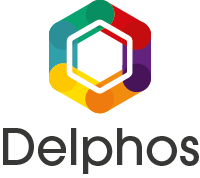Introduction
This article will give you a quick rundown of what makes an app tick and set the scene for future articles that will delve a little deeper.
So, if you’ve ever wondered what an app is beyond what you see on your phone, read on.
What makes an app?
In recent years “apps” has become more synonymous with apps on your phone or tablet, but the term covers more than that.
Apps are software and what’s changed is where that software is. But it’s still software running on a device that performs a particular function.
Mobile apps
If you spend just a few minutes on any app store, you’ll realise that the choice is bewildering. You’ll find apps to access your social media, track your sales, do your company accounts, or track flights from your local airport.
Developers create mobile apps for many reasons, but mostly it makes their software more accessible to a much broader market. For instance, 81% of people access Facebook only by their mobile app and 1.5% access it by laptop/desktop alone.
Where it’s useful mobile apps also access the device’s resources like GPS and camera. Just think, this allows Instagram to exist! Sometimes it may be necessary to use the functionality where there is no internet access, for instance, field service teams working in the middle of nowhere. A native mobile app will allow this.
But there are compromises. Developers have to build apps for each operating system; an Apple app won’t work on an Android device and visa-versa. Also, the screens are smaller, so the functionality of the user interface could be limited, and that’s where web apps come in.
Web apps
These run on the web browser on any device, like desktops or laptops. They’re essentially websites that, if well designed, will work well on various screen sizes and should operate equally well on all devices. And so they are highly versatile and much easier and less costly to build.
Because they operate in the browser, they don’t need to be downloaded, which makes accessing them more accessible. However, it will run slower and require an internet connection to run.
It’s all about access.
Sometimes, mobile and web apps are stand-alone and do an elementary function. It lives entirely on your phone or in the browser. But more often than not, mobile and web apps exist only to connect to an internet service where the app resides. The processing, logic functions, and data live on cloud servers.
An excellent example would be Facebook. There is a mobile app and a website, and both access the same internet service. The famous algorithm that decides what you get to see lives on Facebook’s servers, along with all your photos, old posts, and friends lists.
Think of the mobile or web-based app simply as the window through which you interact with the app that lives on the software stack.
Software stack
These are the technologies, frameworks, and tools used to build an app. In the most general terms, there will be a front-end, a back-end, and a database which together make the app do its job. I know this sounds like a big heap of jargon, so let’s concentrate on a couple of essential terms.
Front-end – This is the bit you interact with: the mobile or web app.
Back-end – The brain of the app that crunches the numbers, makes decisions, and sifts through the database to find what you need and controls the flow of data between the front end and the database.
Database – All of the data lives here: it’s your customer lists, product information, price lists, posts, and tweets.
API – it’s how they talk.
So, we have our mobile and web apps (front-ends) on your phone or laptop, and we have the back-end and database on a server, god knows where. But how do they talk?
In most apps you’re familiar with, it’s likely to be Application Programming Interfaces (API). It’s effectively a gateway in and out of the app’s back-end: it provides a common language for the front-end to interact. This way, it makes no difference if it’s an Apple app, an Android app, or the browser on your laptop.
Exciting stuff, eh? – No?
Well, it is for one big reason: in many cases, the API is open and available for anyone to access, meaning we mortals get to play.
So you can pull Facebook or LinkedIn lead responses directly into a spreadsheet or your CRM. We can add new Shopify orders to a Mailchimp mailing list. How about saving all email attachments into named folders on OneDrive or GoogleDrive?
The possibilities to streamline and automate your most tedious tasks are almost limitless, saving you time and money. Not only that, it cuts out the cock ups and is going to help you deliver genuinely fantastic service.
Surely, now it IS starting to sound exciting.

